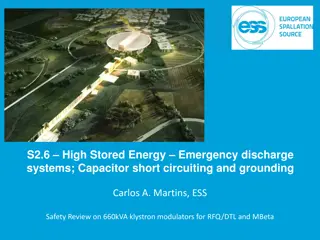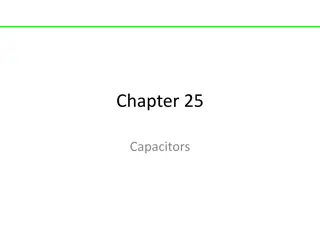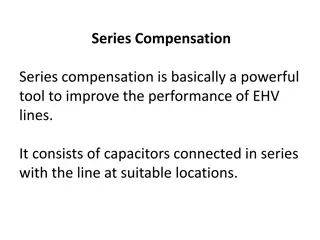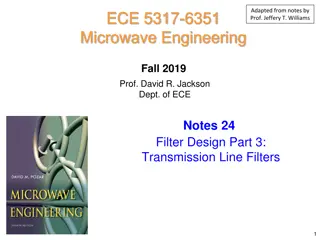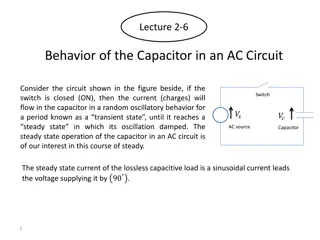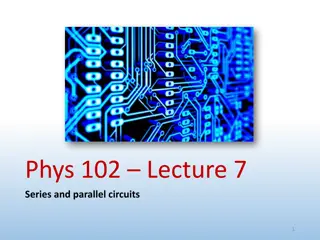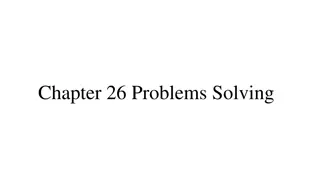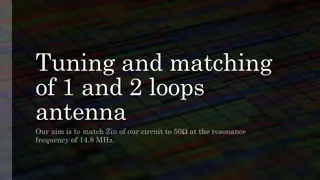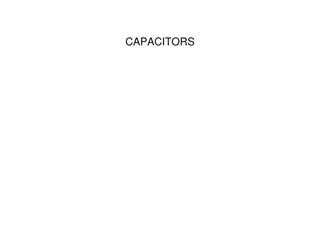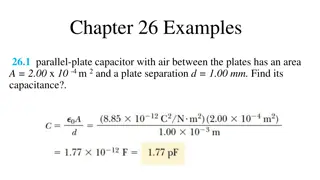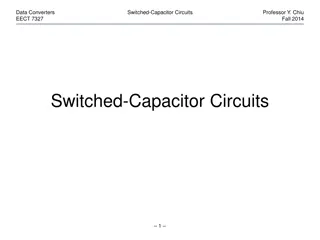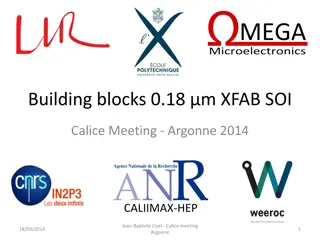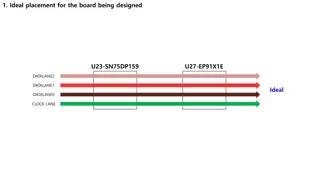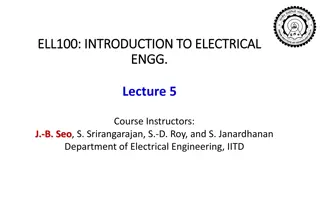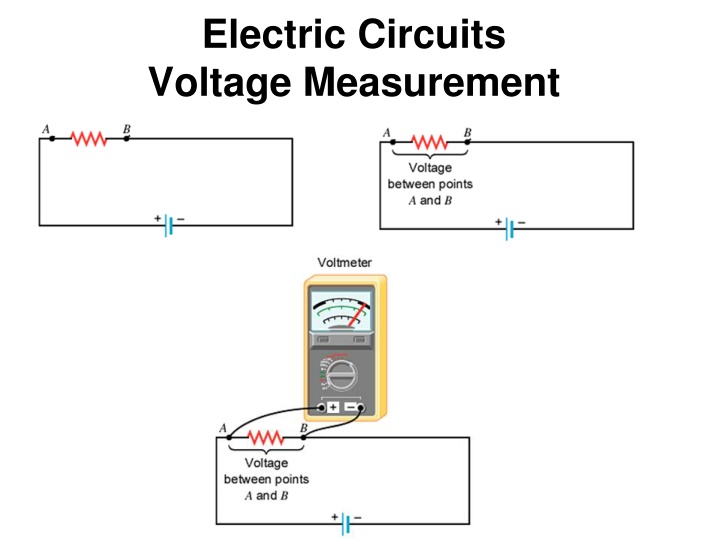
Electric Circuits and RC Circuit Applications
Explore electric circuits, voltage and current measurements, capacitors in parallel and series, RC circuits for charging and discharging, and the physics of heart pacemakers. Discover how capacitors control pulse rates in pacemakers through a real-world scenario.
Download Presentation

Please find below an Image/Link to download the presentation.
The content on the website is provided AS IS for your information and personal use only. It may not be sold, licensed, or shared on other websites without obtaining consent from the author. If you encounter any issues during the download, it is possible that the publisher has removed the file from their server.
You are allowed to download the files provided on this website for personal or commercial use, subject to the condition that they are used lawfully. All files are the property of their respective owners.
The content on the website is provided AS IS for your information and personal use only. It may not be sold, licensed, or shared on other websites without obtaining consent from the author.
E N D
Presentation Transcript
Electric Circuits Voltage Measurement
RC CIRCUITS: Charging Time constant = = RC
RC Circuits: Discharging Time constant = = RC
The physics of heart pacemakers Heart pacemakers, for instance, incorporate RC circuits to control the timing of voltage pulses that are delivered to a malfunctioning heart to regulate its beating cycle.
P 103 In a heart pacemaker, a pulse is delivered to the heart 81 times per minute. The capacitor that controls this pulsing rate discharges through a resistance of 2.1 M . One pulse is delivered every time the fully charged capacitor loses 68.0% of its original charge. What is the capacitance of the capacitor?

